The Mexican Día de Muertos (Day of the Dead) is a holiday that is widely celebrated in Mexico and among Mexican communites around the world.
Observed on November 1st and November 2nd, the holiday honors friends and family who have passed away, and welcomes back the souls of the deceased to celebrate with their loved ones.
According to History.com:
On the Day of the Dead, it’s believed that the border between the spirit world and the real world dissolve. During this brief period, the souls of the dead awaken and return to the living world to feast, drink, dance and play music with their loved ones. In turn, the living family members treat the deceased as honored guests in their celebrations, and leave the deceased’s favorite foods and other offerings at gravesites or on the ofrendas built in their homes.
History
The history of Día de Muertos is complex, and many of the traditions associated with the holiday date back thousands of years to the Aztecs, prior to the arrival of Spanish colonists to Mexico.
In Aztec times, the festival that eventually developed into the modern Day of the Dead was celebrated in August and lasted a whole month. Likely due to the influence of Spanish colonists, the modern observance eventually came to be recognized on October 31, November 1, and November 2, coinciding with the Christian observance of All Saints’ Eve (Halloween), All Saints’ Day, and All Souls’ Day.
Despite the timing of the holiday, it is a mistake to view Día de Muertos as simply a Mexican version of Halloween. As mentioned, the festival and its associated rituals honoring the dead signficantly pre-date the arrival of Spaniards to the New World.
Traditions
Día de Muertos is observed with many colorful traditions that you may recognize, such as:
Calaveras
Perhaps the most recognizable tradition associated with Día de Muertos are calaveras (skulls). Calaveras and and calacas (skeletons) are often included as part of the ofrendas – the altars to the decreased:
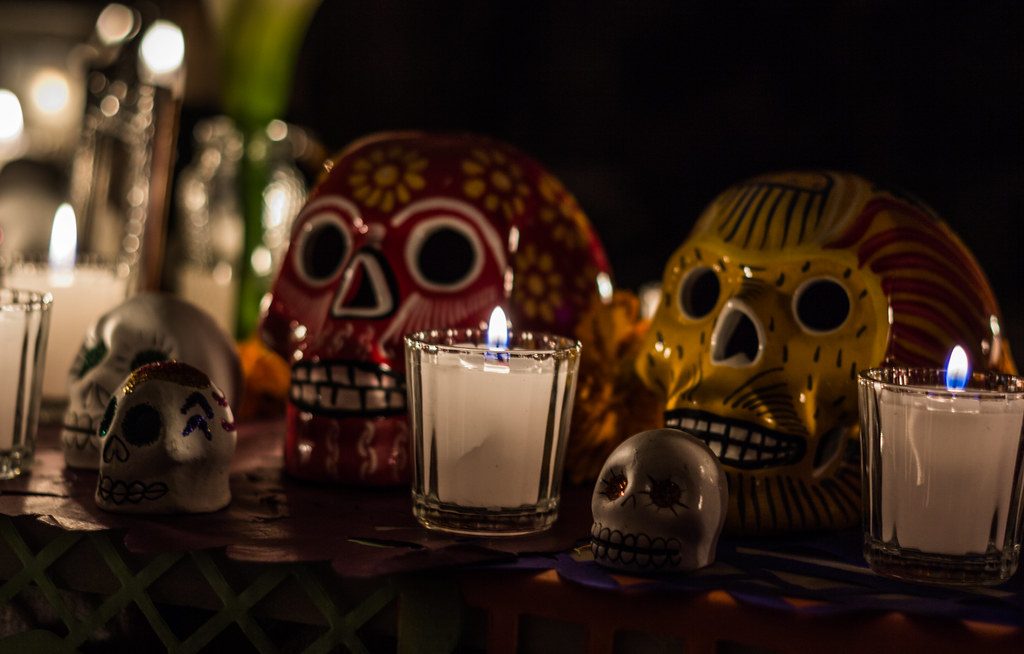
The skull images are also frequently seen as painted faces as part of elaborate costumes on Día de Muertos:
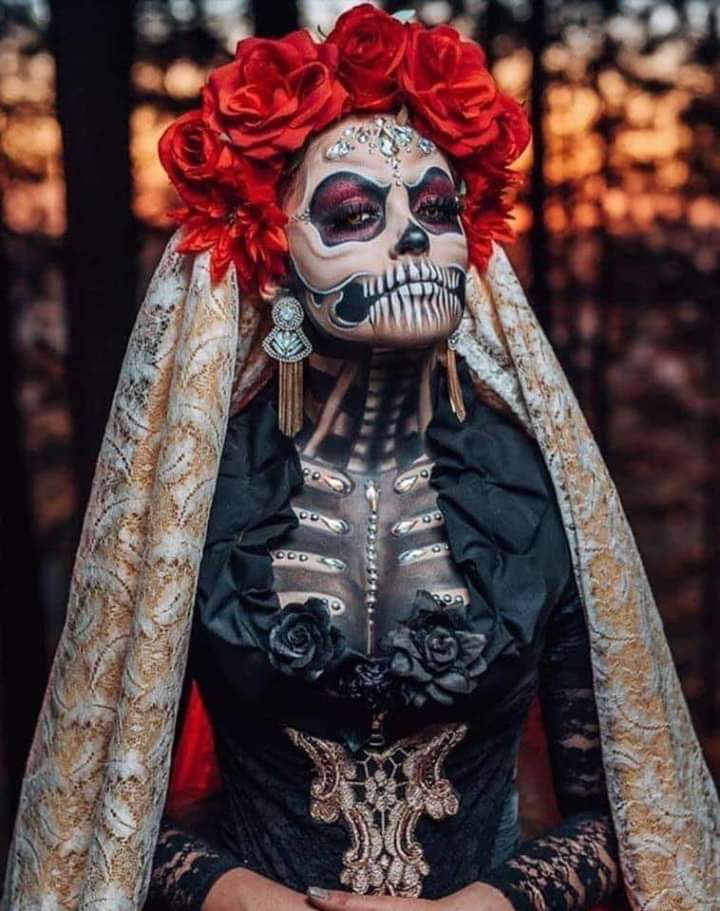
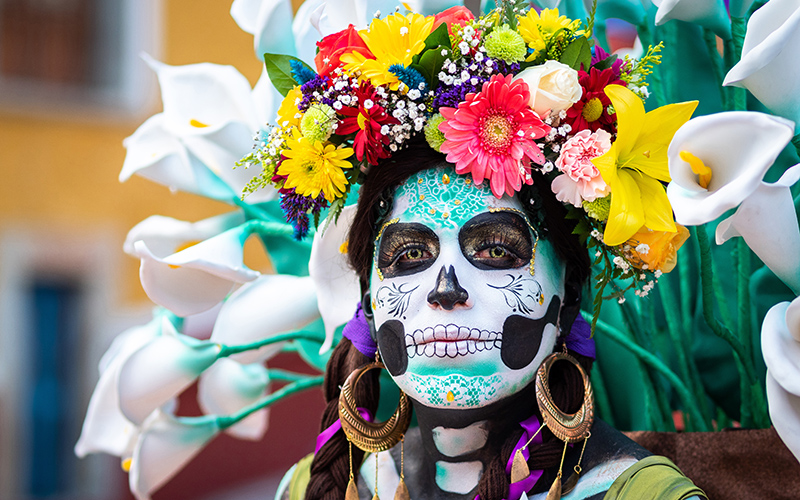
Ofrendas
Perhaps the most important tradition of Día de Muertos is the ofrenda – a colorful altar dedicated to departed friends and family, which often includes photos or mementos of the deceased. Ofrendas are often adorned with skulls made of sugar or clay, bright flowers, skeleton figurines, and candles, along with an offering of food and drink for the souls of the deceased.

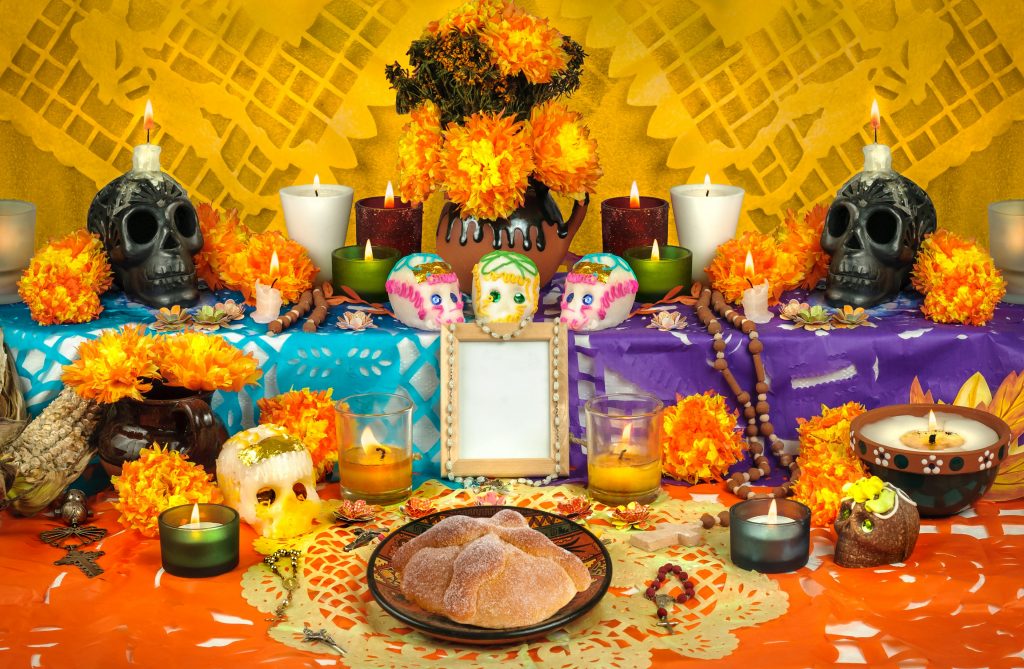
Marigolds
Día de Muertos altar decorations often include fresh marigolds or marigolds cut out of paper. It is believed the marigolds’ vibrant colors and pungent scent help guide the spirits of the dead to their altars.
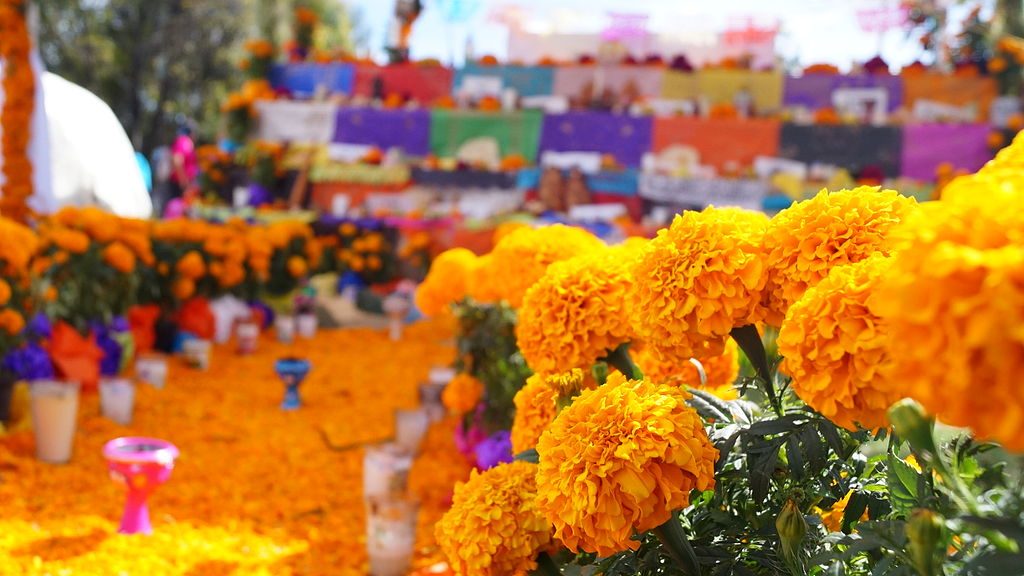
Pan de Muerto
Pan de Muerto is a special type of bread associated with Dia de Muertos. The bread is part of the traditional offering to the spirits, along with other food and drinks.

References:



